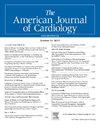Artificial Intelligence for Risk Stratification of Acute Pulmonary Embolism: Perspectives on Clinical Needs, Expanding Toolkit, and Pathways Forward
IF 2.1
3区 医学
Q2 CARDIAC & CARDIOVASCULAR SYSTEMS
引用次数: 0
Abstract
Despite a significant number of innovations for management of acute pulmonary embolism (PE) over the past decade, PE-related mortality has not decreased as expected. Significant heterogeneity in PE presentations and limitations in contemporary risk stratification approaches are hypothesized to be important drivers of poorer than expected outcomes. Recently, artificial intelligence (AI) has gained attention in cardiovascular medicine, notably in wearable technology, electrocardiography, and cardiovascular imaging. The utility of AI has been studied in PE diagnosis and risk stratification, especially in hospitalized patients and has the potential to predict presence of PE based on electrocardiography and clinical risk factors, decrease time to diagnosis, and improve characterization of PE as acute versus chronic. However, AI systems do not appear to have better accuracy in identification of PE compared with radiologists. Additionally, whether utilization of AI in diagnosis and management of PE will improve clinician workflow and patient outcomes remains unknown. In this review, we critically appraise the literature on AI-based strategies to diagnose and refine risk stratification of acute PE and discuss how integration of AI may move the field of PE forward with the universal goal of improving short- and long-term PE-related outcomes.
急性肺栓塞风险分层的人工智能:临床需求,扩展工具包和前进途径的观点。
尽管在过去的十年里,急性肺栓塞(PE)的治疗有了大量的创新,但PE相关的死亡率并没有像预期的那样下降。假设PE表现的显著异质性和当代风险分层方法的局限性是比预期结果差的重要驱动因素。最近,人工智能(AI)在心血管医学领域引起了人们的关注,特别是在可穿戴技术、心电图和心血管成像领域。人工智能在PE诊断和风险分层中的应用已经被研究,特别是在住院患者中,它有可能根据心电图和临床危险因素预测PE的存在,减少诊断时间,并改善PE的急性和慢性特征。然而,与放射科医生相比,人工智能系统在识别PE方面似乎没有更好的准确性。此外,人工智能在PE诊断和管理中的应用是否会改善临床医生的工作流程和患者的预后仍不得而知。在这篇综述中,我们批判性地评估了基于人工智能的策略来诊断和完善急性PE的风险分层的文献,并讨论了人工智能的整合如何推动PE领域向前发展,以改善短期和长期PE相关结果。
本文章由计算机程序翻译,如有差异,请以英文原文为准。
求助全文
约1分钟内获得全文
求助全文
来源期刊

American Journal of Cardiology
医学-心血管系统
CiteScore
4.00
自引率
3.60%
发文量
698
审稿时长
33 days
期刊介绍:
Published 24 times a year, The American Journal of Cardiology® is an independent journal designed for cardiovascular disease specialists and internists with a subspecialty in cardiology throughout the world. AJC is an independent, scientific, peer-reviewed journal of original articles that focus on the practical, clinical approach to the diagnosis and treatment of cardiovascular disease. AJC has one of the fastest acceptance to publication times in Cardiology. Features report on systemic hypertension, methodology, drugs, pacing, arrhythmia, preventive cardiology, congestive heart failure, valvular heart disease, congenital heart disease, and cardiomyopathy. Also included are editorials, readers'' comments, and symposia.
 求助内容:
求助内容: 应助结果提醒方式:
应助结果提醒方式:


